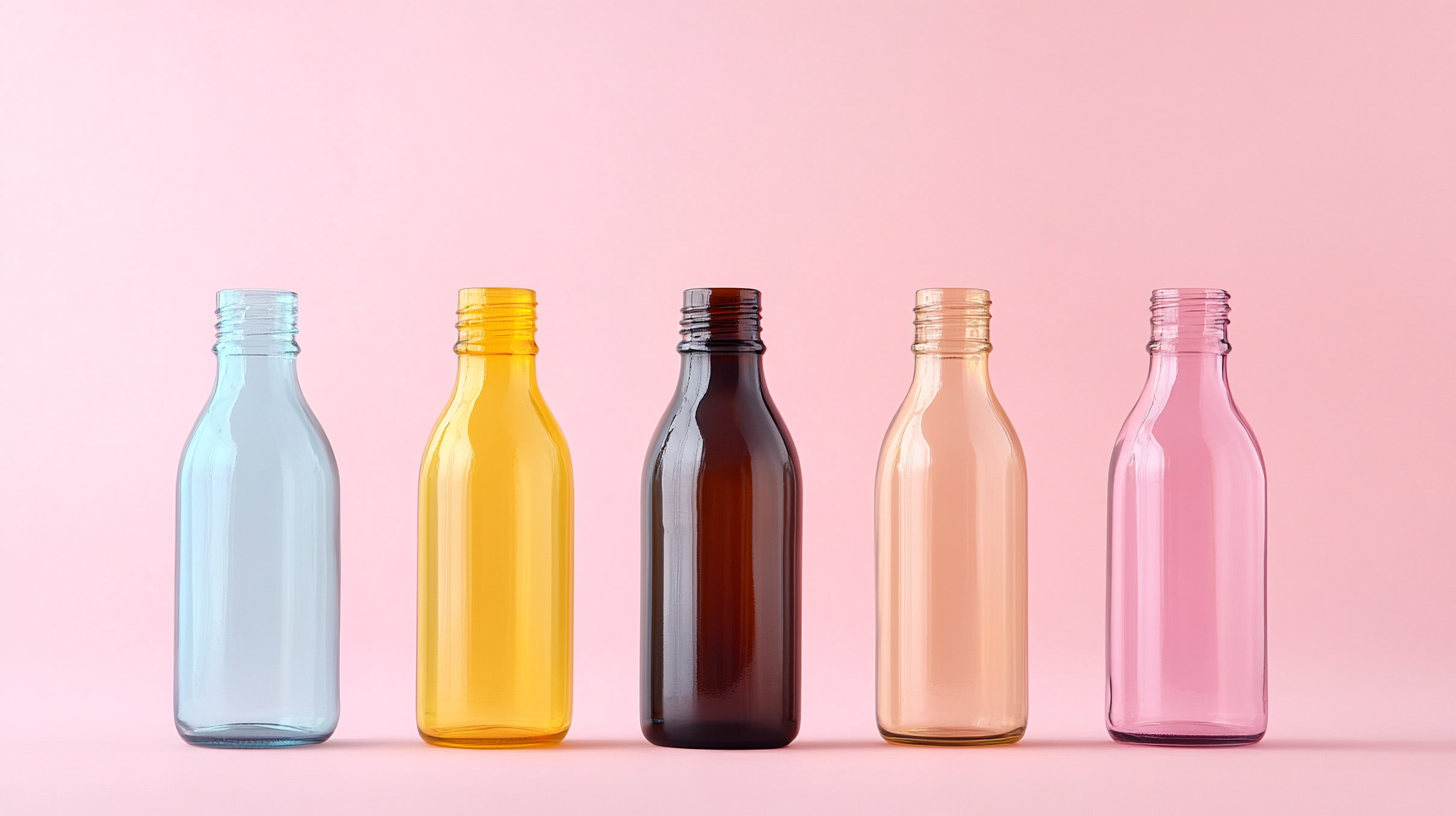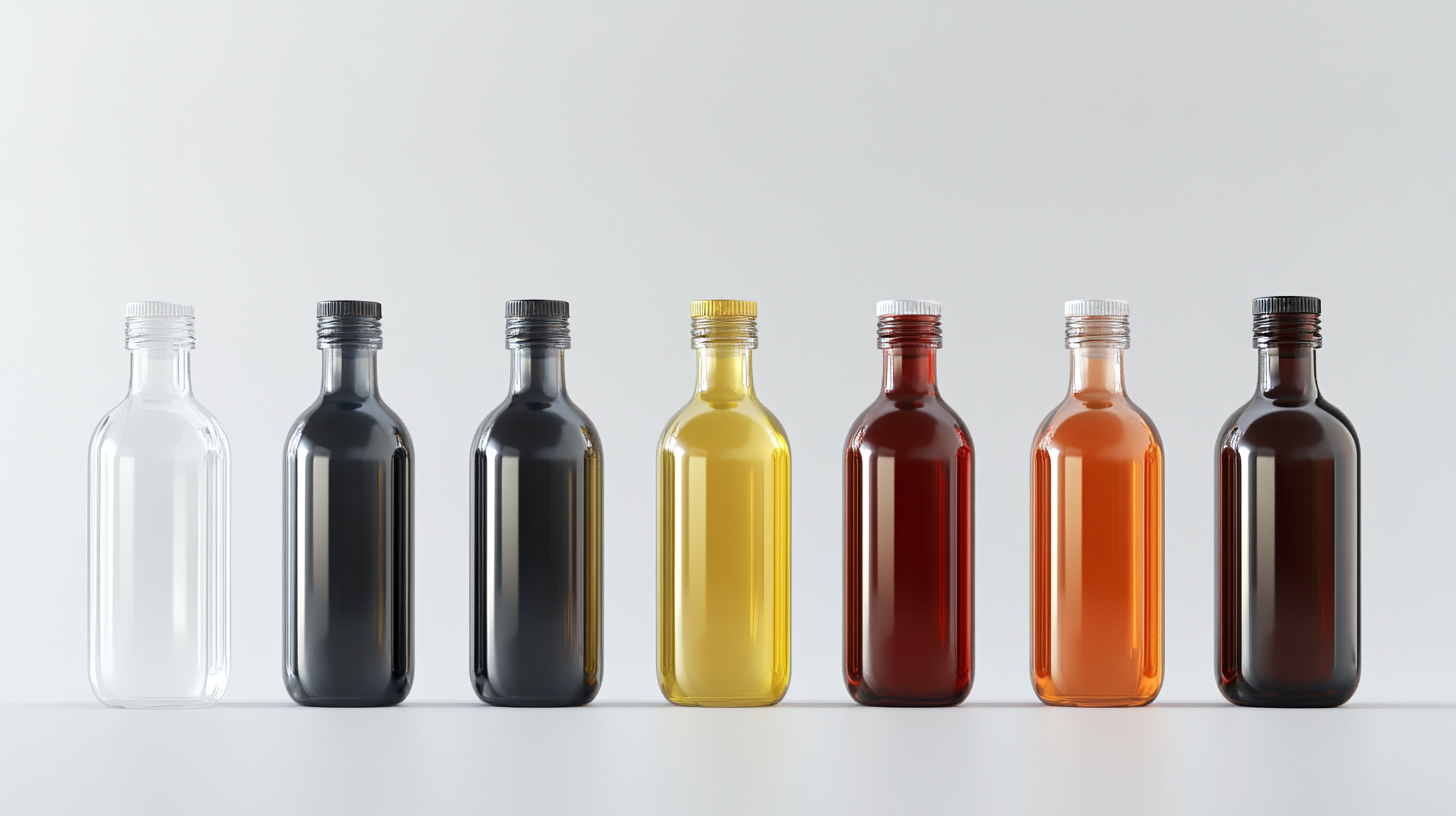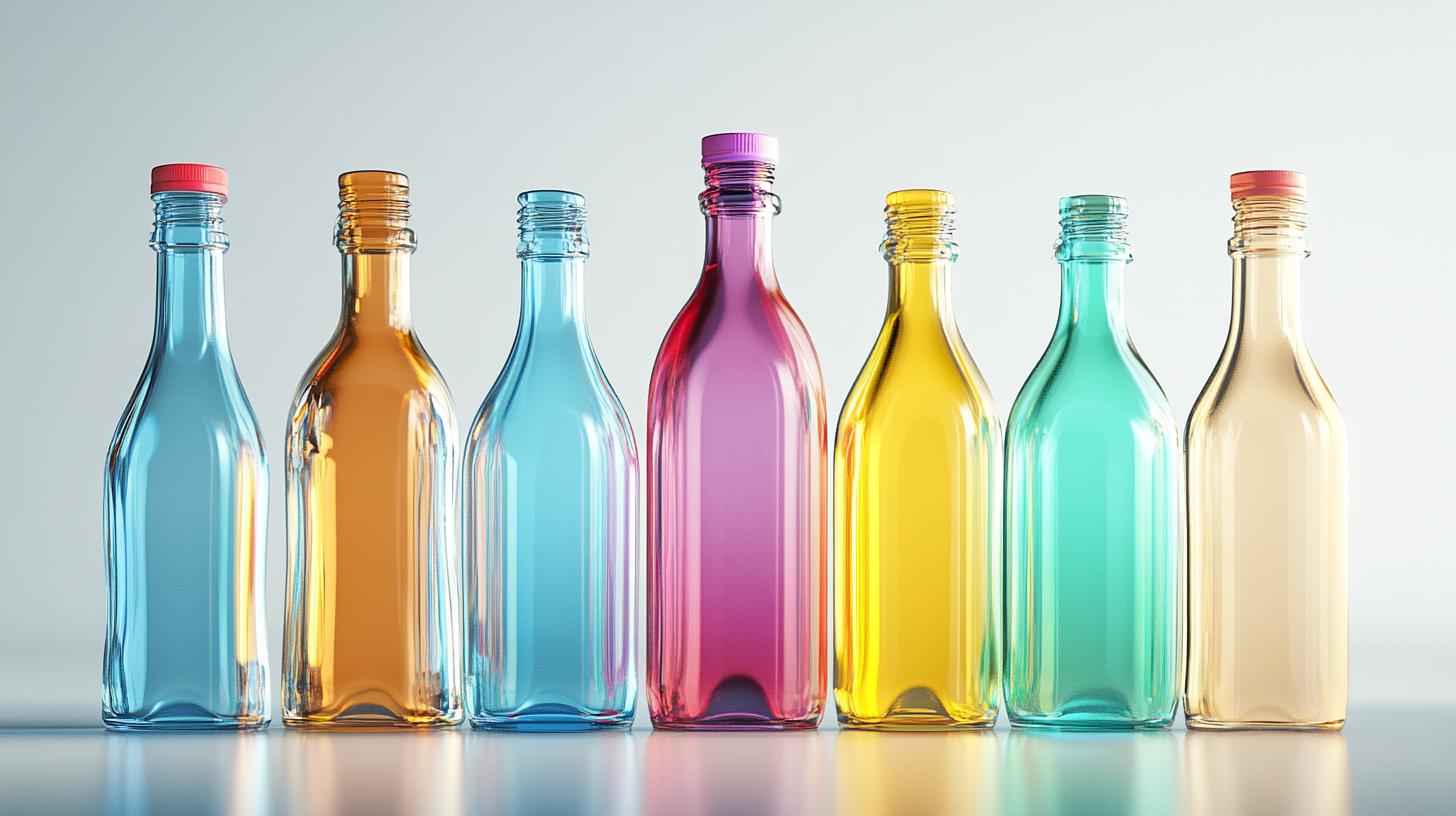Innovative Global Sourcing Trends for Glass Bottles With Caps in 2025
In the ever-evolving landscape of packaging, the demand for innovative designs and sustainable solutions continues to shape the industry. As we look towards 2025, the trend of sourcing Glass Bottles With Caps is gaining momentum, driven by consumer preferences for eco-friendly materials and the aesthetic appeal these bottles bring to various products. Manufacturers and brands are increasingly recognizing the importance of not only functionality but also the visual and environmental aspects of their packaging choices.
This blog will explore the innovative global sourcing trends for Glass Bottles With Caps, highlighting the shifts in materials, designs, and sourcing strategies that are influencing the market. As sustainability takes center stage, we will examine how companies are adapting to these changes while meeting consumer demands for quality and reliability. Join us as we delve into the future of glass packaging and its role in creating a more sustainable and appealing product delivery system.

Emerging Materials: Eco-Friendly Options for Glass Bottles in 2025
As we look ahead to 2025, the packaging industry is witnessing a significant shift towards sustainability, particularly in the glass bottle sector. Emerging materials that prioritize environmental impact are gaining traction, driven by both consumer demand for eco-friendly products and growing regulations. Organizations are increasingly exploring alternatives that not only reduce the carbon footprint but also enhance the overall aesthetic appeal of glass packaging. One of the most exciting developments is the incorporation of recycled glass in bottle production. Using recycled materials not only conserves natural resources but significantly reduces energy consumption in manufacturing. Companies are adopting innovative designs that emphasize the use of post-consumer recycled glass. This not only reintegrates material back into the supply chain but also offers unique textures and colors, making glass bottles more attractive to environmentally conscious consumers. Additionally, the rise of biopolymers is revolutionizing the market. These bio-based materials, derived from renewable sources, are being used for caps and closures, providing a fully sustainable alternative to traditional plastic. This trend is not just about meeting regulatory needs; it's about creating a cohesive brand image that reflects environmental responsibility. As we move forward, brands that embrace these innovative, eco-friendly materials will not only appeal to a growing segment of eco-conscious consumers but will also lead the way in the evolution of responsible packaging solutions.

Supply Chain Innovations: Enhancing Efficiency in Glass Bottle Production
The glass bottle industry is undergoing significant transformations driven by innovative supply chain solutions aimed at enhancing production efficiency. In 2025, manufacturers are increasingly leveraging advanced technologies such as IoT (Internet of Things) and AI (Artificial Intelligence) to streamline operations, reduce waste, and improve overall productivity. By implementing real-time data analytics, companies can monitor production processes more closely, allowing for quick adjustments and maintenance, ultimately leading to minimized downtime.
Furthermore, sustainable sourcing practices are becoming a focal point in the glass bottle sector. Companies are adopting circular economy principles, including recycling and reusing materials in the production process. This not only lowers the carbon footprint but also enhances efficiency in sourcing raw materials. Collaborations with local suppliers are expected to become more prevalent, enabling businesses to reduce transportation costs and lead times while supporting economic growth in their communities.
In addition, the use of digital supply chain platforms is revolutionizing inventory management and logistics. By employing predictive analytics, companies can better forecast demand and optimize their supply chain networks. These platforms facilitate real-time communication between suppliers, manufacturers, and retailers, ensuring that glass bottles with caps are produced and delivered in line with consumer trends and preferences. As these innovations continue to evolve, they will play a crucial role in shaping a more responsive and efficient glass bottle supply chain for the future.

Global Market Demand: Trends Shaping the Future of Glass Bottle Sourcing
The global market for glass bottles with caps is experiencing a notable transformation, driven by shifting consumer preferences and sustainability concerns. According to a report by Allied Market Research, the global glass bottle market is projected to reach $88.4 billion by 2025, growing at a compound annual growth rate (CAGR) of 3.6% from 2018 to 2025. This trend signifies a robust demand for glass packaging, especially in the beverage and food industries, as awareness about the environmental impact of plastic packaging continues to rise.
One of the key trends shaping the future of glass bottle sourcing is the increasing preference for eco-friendly packaging. The Global Packaging Alliance highlights that approximately 60% of consumers are willing to pay more for products in sustainable packaging. This demand is fueling innovations in glass bottle manufacturing, such as the introduction of lightweight and reusable glass options that reduce carbon footprints while maintaining product integrity. Additionally, brands are increasingly investing in closed-loop recycling systems that allow for the re-use of glass bottles, thereby enhancing both sustainability and cost-effectiveness in the supply chain.
Moreover, advancements in technology are playing a crucial role in this sector. The introduction of automated and precision manufacturing processes not only improves efficiency but also supports customization, allowing brands to differentiate their products on the shelves. Data from Grand View Research indicates that the customization segment in glass packaging is expected to grow significantly, driven by the demand for unique designs that enhance brand identity. As we move toward 2025, it is evident that the interplay between sustainability, technological innovation, and consumer preferences will continue to reshape the landscape of glass bottle sourcing on a global scale.

Technological Advances: Impact of Automation on Glass Bottle Manufacturing
The glass bottle manufacturing industry is undergoing a transformative shift thanks to significant technological advances, particularly in automation. According to a report by Smithers Pira, the global glass packaging market is expected to reach $74.7 billion by 2025, driven by increased demand for sustainable packaging and enhanced production efficiencies. Automation plays a crucial role in meeting these demands, allowing manufacturers to streamline processes, reduce labor costs, and improve product quality.
Recent innovations in robotics and artificial intelligence are revolutionizing how glass bottles are produced. Automated systems can handle tasks such as sorting, packaging, and quality control, significantly reducing the potential for human error. For instance, a study by the International Glass Industry Association found that automated inspection systems can improve defect detection rates by up to 90%, helping companies maintain higher standards and meet strict regulations in the beverage and food industries.
Moreover, the increasing implementation of Industry 4.0 technologies is facilitating real-time data analytics, enabling manufacturers to optimize production schedules and inventory management. According to a forecast by Mordor Intelligence, the automation solutions market for packaging in the food and beverage sector is projected to grow at a CAGR of 7.6% from 2020 to 2025. This growth illuminates how critical automation is for glass bottle manufacturers aiming to enhance their competitiveness in a rapidly evolving global market.
As we move closer to 2025, the intersection of automation and glass bottle production will not only drive efficiencies but will also offer new avenues for innovation, shaping a sustainable and economically viable future for the industry.
Consumer Preferences: Shifting Trends in Cap Designs for Glass Bottles
As we look ahead to 2025, the trends in consumer preferences for cap designs in glass bottles are shifting significantly, reflecting a broader move towards sustainability and functionality. Recent data indicates that the caps and closures market is projected to grow from an estimated USD 76.1 billion in 2024 to USD 103.5 billion by 2030, with a compound annual growth rate (CAGR) of 5.2%. This growth showcases the rising demand for innovative designs that meet both aesthetic and practical needs, especially as consumers become increasingly eco-conscious.
The beverage container market, valued at USD 188.4 billion in 2023, is expected to reach USD 277.6 billion by 2032. This lucrative shift is partly driven by consumers seeking premium and sustainable packaging options. In particular, brands are embracing eco-friendly cap designs, which not only reduce environmental impact but also appeal to conscientious consumers. For instance, olive oil producers have begun adopting reduced plastic designs, highlighting a growing trend toward sustainable packaging solutions.
Moreover, the global glass container market, anticipated to reach USD 91.1 billion, exemplifies the preference for glass over plastic in various end-use industries, such as pharmaceuticals and beverages. As sustainability becomes a central theme in consumer choices, companies are innovating cap designs that are not only functional but also contribute to a reduced carbon footprint. This illustrates a significant transformation in consumer preferences, as they increasingly favor products that align with their values of health, sustainability, and quality.

